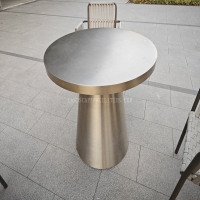Welcome to the website for landscape facilities products and knowledge.
How does the table’s design accommodate users with specific outdoor dining traditions?
Outdoor dining represents more than just eating in open air—it embodies cultural heritage, social rituals, and centuries-old traditions that require thoughtful furniture design. Modern outdoor tables have evolved beyond mere functionality to accommodate specific dining customs from around the world.
For Mediterranean cultures where extended family gatherings are common, manufacturers now create extra-wide tables with reinforced bases to support massive platters of shared food. The typical Spanish or Italian outdoor table features heat-resistant surfaces for warm dishes and slightly elevated edges to prevent olive pits or bread crumbs from falling to the ground—a consideration for the leisurely, multi-course meals that can last hours.
In Middle Eastern traditions where floor seating and low tables prevail, designers have developed innovative adjustable-height tables. These can transform from standard dining height to traditional floor-level seating, accommodating the majlis style of dining while providing back support for those unaccustomed to cross-legged positions. The surfaces often incorporate intricate patterns that mirror traditional Persian carpets, blending cultural aesthetics with functionality.
Japanese garden dining requires entirely different considerations. Designers create low-profile tables with removable centers for hibachi grills, allowing users to enjoy traditional yakiniku while surrounded by nature. The materials—typically teak or shou sugi ban charred wood—withstand humidity while complementing the minimalist aesthetic of Japanese garden design. Many feature discreet drainage channels for tea ceremony implementations where water might be involved.
Scandinavian outdoor traditions demand year-round functionality. Their table designs incorporate hidden compartments for wool blankets and built-in candle holders to extend dining into cooler evenings. The surfaces are typically light-colored to maximize visibility during dark winter months, while the construction utilizes slatted designs that prevent snow accumulation.
Contemporary designers also address practical universal needs. Tables now incorporate integrated shading solutions, built-in cooling compartments for beverages, and antimicrobial surfaces that maintain hygiene during finger-food centered traditions like Ethiopian injera meals. The evolution of outdoor table design demonstrates how furniture can honor cultural heritage while adapting to modern materials and technologies, creating spaces where tradition and innovation dine together harmoniously.
Related search:

Recommendation
Outdoor Metal Table - Classic Outdoor Furniture, Stainless Steel Table, Durable and Reliable